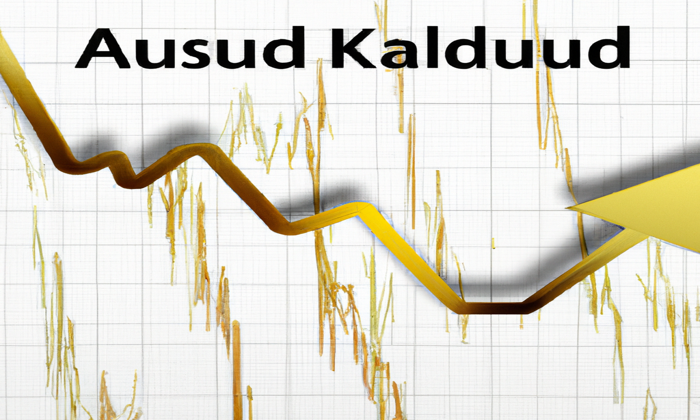Coinbase’s latest earnings miss has raised eyebrows across Wall Street, as analysts react to the exchange’s disappointing Q1 results. Despite a promising acquisition of Deribit for $2.9 billion, the company’s revenue dropped significantly, impacting investor sentiment. This downturn highlights broader trends in the crypto market analysis, where trading volumes and fee structures are under scrutiny. As Coinbase grapples with these challenges, discussions around its sustainability and growth prospects become more critical. Wall Street analysts are split, with some focusing on short-term pressures while others remain optimistic about Coinbase’s long-term strategies and market positioning.
The recent setback in Coinbase’s earnings report has sparked significant discussion among financial experts and market watchers. As the premier cryptocurrency exchange stumbles with its quarterly profits, the implications of a $2.9 billion acquisition, notably of Deribit, come into sharper focus. Analysts have differing interpretations of these developments, particularly regarding potential revenue shifts and customer engagement amidst fluctuating crypto conditions. This multifaceted scenario has led to an array of opinions on Coinbase’s future, particularly in relation to its strategic pivots within the ever-evolving digital currency landscape. Whether through infrastructure advancements or expanding service offerings, there are both challenges and opportunities that lie ahead for the company.
Coinbase Earnings Miss: Understanding the Impact
Coinbase’s recent earnings report has sent ripples through the financial markets, showcasing a revenue drop that caught many off-guard. The first-quarter results indicated a 12% decline, falling below analyst expectations, which has raised concerns regarding the overall health of the crypto exchange. As investors sift through the data, some are particularly worried about the 19% drop in transaction revenue, hinting at a tougher second quarter ahead. These figures paint a complex picture, where the near-term outlook for Coinbase’s performance appears more challenging amidst a backdrop of decreasing trading volumes and institutional activity.
Despite these immediate concerns following the earnings miss, it is essential to understand the mixed guidance provided by Wall Street analysts. Some analysts have opted to downgrade their short-term forecasts while others maintain a more optimistic view on the long-term prospects for Coinbase. The forthcoming transformation of Coinbase into a more diversified platform — particularly with the recent acquisition of Deribit, a leading cryptocurrency derivatives exchange — could position the company at the forefront of nascent trading strategies in a recovering market.
Analyzing Coinbase Q1 Results: What Went Wrong?
The Q1 results for Coinbase reveal a scenario marked by mixed signals, primarily driven by reduced trading volumes and a decrease in institutional demand. Analysts have noted that while retail trading has stabilized, the drop in volume from institutional clients was particularly damaging, falling 30% quarter-over-quarter. These financial dynamics suggest a market environment that may not favor Coinbase’s traditional revenue streams as much as anticipated.
Moreover, the decrease in fee rates — dropping from 4.1 to 3.1 basis points — emphasizes the tightening margins that Coinbase is facing, attributed in part to increased competition from other crypto exchanges and the growing influence of high-frequency trading. Analysts are closely monitoring how Coinbase responds to these pressures, especially as they relate to their broader strategic efforts and future earnings expectations.
The Deribit Acquisition: Strategic Moves for Future Growth
Coinbase’s acquisition of Deribit for $2.9 billion is seen by many analysts as a high-stakes bet on the growing derivatives market within the cryptocurrency sector. Deribit, known for its substantial trading volumes which reached $1.2 trillion annually, positions Coinbase to leverage its capabilities in futures and options trading — aspects that are increasingly vital for attracting more institutional clients. This move could not only enhance Coinbase’s product offerings but also strengthen its international presence, thereby offsetting the pressures highlighted in the recent Q1 results.
By honing in on the derivatives market, Coinbase aims to diversify its revenue streams and stabilize earnings amid fluctuating spot trading conditions. Analysts have pointed out that this strategic acquisition could lay the groundwork for future innovations, especially as regulation around crypto derivatives may evolve in the coming years. By acting decisively now, Coinbase is hedging against potential challenges and positioning itself to capitalize on expanding market opportunities.
Market Reactions: Analyst Perspectives on Coinbase
Following the disappointing Q1 earnings report, analysts have displayed a spectrum of reactions regarding Coinbase’s outlook. Major firms, including Barclays and JPMorgan, have modified their ratings and predictions, reflecting caution over short-term revenue losses while still acknowledging the potential benefits of Coinbase’s diversification strategy. The juxtaposition of some analysts maintaining ‘outperform’ ratings alongside downgrades by others illustrates the high level of scrutiny that Coinbase faces in an unpredictable market.
The mixed reactions can be attributed to the broader context of the cryptocurrency market, which remains vulnerable to macroeconomic shifts and regulatory uncertainties. Analysts emphasize that while the path forward may seem rocky due to current performance metrics, Coinbase’s strong market position and proactive strategies — such as their focus on expanding subscription services and enhancing custody offerings — will be crucial in recovering momentum in the long term.
Institutional Trading and Its Influence on Coinbase Performance
Institutional trading has always been a pivotal aspect of Coinbase’s business model, yet recent reports showed a noticeable drop in this segment, causing alarm among investors. The significant 30% decline in revenue from institutional volumes in Q1 is indicative of a shift in market conditions that requires immediate attention. Analysts suggest that this downturn could significantly alter Coinbase’s trajectory if not addressed with robust strategic measures.
Historically, Coinbase has benefited from institutional investments, which tend to provide a more stable influx of revenue compared to retail trading. However, the emergence of competitive exchanges targeting these high-value clients poses challenges that could weaken Coinbase’s long-standing advantage. As trading dynamics evolve with the advent of new technologies and market players, Coinbase must innovate to regain its foothold among institutional investors.
Coinbase’s Subscription Services: A Revenue Lifeline?
In light of the recent earnings miss, Coinbase is increasingly looking towards its subscription and service offerings to bolster future revenue streams. The company reported a 9% rise in subscription-based revenue to $698 million, underlining a potential lifeline as transactional revenues decline. The increasing adoption of stablecoins, particularly USDC, enhances this aspect of Coinbase’s business, as more users seek access to digital currencies while mitigating volatility risks.
The outlook for subscription services might also provide a hedge against the current cyclical downturns in trading volumes within the crypto market. With the company’s efforts to expand ‘Coinbase as a Service’ solutions, they could capture a larger share of institutions looking to enter the blockchain space without the technical burdens. This shift not only diversifies their revenue streams but positions Coinbase as a critical infrastructure provider in the evolving landscape of digital asset trading.
Competitive Landscape: How Coinbase Stands Against Rivals
As Coinbase grapples with a declining revenue environment, the competitive landscape of cryptocurrency exchanges grows fiercer. Rival platforms have leveraged lower fees and advanced trading technologies to attract both retail and institutional customers, challenging Coinbase’s established market share. The recent volatility in trading volumes has highlighted just how vital agility and innovation will be in maintaining a competitive edge amid rising competition.
Many analysts believe that Coinbase’s sturdy infrastructure and vast user base position it well to respond to these competitive pressures. Nonetheless, with several exchanges innovating rapidly, including aspects like enhanced security protocols and new asset offerings, Coinbase must continue to adapt and expand its service offerings while staying true to its foundational values of security and regulatory compliance.
Regulatory Landscape: Challenges Facing Coinbase’s Future
Recent regulatory developments, including the blockage of the GENIUS Act, create a challenging environment for cryptocurrency exchanges, particularly Coinbase. Anticipation of clearer regulatory frameworks has long fueled investor optimism, and setbacks such as these not only dampen market sentiment but complicate the operational landscape for exchanges. Such uncertainty can lead to reduced investment and trading volumes, exacerbating the challenges faced post-earnings miss.
Analysts assert that until a more stable regulatory environment is established, Coinbase and its peers may struggle to realize the full potential of their product offerings. However, several observers maintain a hopeful outlook, suggesting that renewed legislative focus on digital currencies may resume before the critical recess in August. Understanding how Coinbase navigates these regulatory waters could influence its market positioning significantly moving forward.
The Future of Coinbase: Long-Term Growth Strategies
Despite the present challenges highlighted by Coinbase’s recent earnings miss, many analysts are bullish about the company’s long-term growth potential. Analysts emphasize the importance of Coinbase’s diversifying product suite, which complements its dominant market position and leverages its early-mover advantage in critical areas like derivatives trading and custody solutions. The evolving landscape of digital assets presents ample opportunities for growth, especially with the continued adoption of cryptocurrencies in traditional finance.
As Coinbase embarks on expanding its services and implementing strategic acquisitions like Deribit, the focus on creating value for both institutional and retail clients remains paramount. Through these measures, Coinbase aims to solidify its standing as a key player in the crypto ecosystem, ready to adapt to market fluctuations and maintain its “gold standard” reputation within the industry.
Frequently Asked Questions
What were the key factors contributing to the Coinbase earnings miss in Q1 2025?
The Coinbase earnings miss in Q1 2025 was primarily due to a 12% revenue drop to $2.03 billion, with transaction revenues declining by nearly 19% to $1.3 billion. Analysts noted that unsteady crypto prices and reduced institutional trading activity were significant contributors. The overall softer market conditions led to a cautious outlook on Coinbase’s revenue projections for the approaching quarters.
How is the Deribit acquisition related to Coinbase’s earnings miss?
While the Deribit acquisition, valued at $2.9 billion, is viewed positively as a strategic move that may enhance Coinbase’s position in the derivatives market, it coincided with the company’s earnings miss. Analysts believe that the acquisition could provide long-term benefits even as Coinbase faces short-term revenue pressure from decreased transaction volumes and softer crypto trading conditions.
What impact did Wall Street analysts have on the perception of Coinbase after the earnings miss?
After the Coinbase earnings miss, Wall Street analysts provided mixed reviews. Some downgraded their near-term revenue forecasts, while others praised the long-term growth potential linked to its diversified product offerings and the Deribit acquisition. This divergence reflects uncertainty in the market, with analysts focusing on differing aspects of Coinbase’s overall strategy and market position.
Did the earnings miss affect Coinbase’s subscription and services revenue?
Despite the earnings miss, Coinbase’s subscription and services revenue saw a 9% growth to $698 million, boosted by increased adoption of stablecoins. Analysts suggest that this segment could serve as a hedge against the fluctuations in core trading revenues, indicating a potential shift in how Coinbase generates income amid varying market conditions.
How have institutional trading activities influenced the earnings miss for Coinbase?
Institutional trading activities experienced a significant decline, with a reported 30% drop in revenue quarter-over-quarter, which heavily impacted Coinbase’s earnings for Q1 2025. The reduction in institutional transaction fees from 4.1 to 3.1 basis points was also a factor, reflecting both market pressures and competitive dynamics that could hinder Coinbase’s near-term financial performance.
What should investors consider about Coinbase’s long-term potential after the earnings miss?
Investors should consider Coinbase’s strong U.S. market position, its expansion into derivatives through the Deribit acquisition, and its growth in subscription and service revenues as positive indicators for long-term potential. Analysts remain bullish on Coinbase’s ability to adapt and thrive, positioning itself as a key player in the evolving crypto landscape despite current earnings challenges.
What are the implications of Coinbase’s earnings miss for future trading volumes?
The implications of Coinbase’s earnings miss suggest potential weakness in future trading volumes, especially if market conditions remain subdued. Analysts have pointed to significantly lower anticipated trading activity as a result of softer crypto sentiment and macroeconomic uncertainties, which may dampen Coinbase’s revenue growth in upcoming quarters.
How might regulatory developments affect Coinbase’s financial outlook after the earnings miss?
Regulatory developments play a crucial role in Coinbase’s financial outlook. The recent blockage of the GENIUS Act, aimed at providing regulatory clarity for stablecoins, creates uncertainty that could affect investor confidence and trading volumes. Analysts are hopeful for progress in legislation that could stabilize the market and support Coinbase’s revenue streams in the longer term.
| Key Points | Details |
|---|---|
| Earnings Miss | Coinbase’s Q1 revenue fell by 12% to $2.03 billion, missing Wall Street expectations. |
| Executive Outlook | Analysts provided mixed assessments post-earnings, with some downgrading forecasts due to market conditions. |
| Acquisition of Deribit | Coinbase announced a $2.9 billion acquisition of Deribit, enhancing cryptocurrency derivatives offerings. |
| Revenue Components | Transaction revenue down by 19% to $1.3 billion; however, subscription revenue grew to $698 million. |
| Future Growth Levers | The growth in stablecoin revenue and infrastructure services, like custody and trading tech, may offset volatility. |
| Market Position | Despite short-term challenges, Coinbase’s broad product suite and market position are viewed positively for long-term growth. |
Summary
The Coinbase earnings miss has raised concerns among investors and analysts alike as they evaluate the company’s future in a volatile crypto market. With a decline in revenue and mixed forecasts from Wall Street, Coinbase’s recent acquisition of Deribit could serve as a potential strategy to secure its position in the evolving landscape of crypto derivatives. While challenges lie ahead, Coinbase aims to leverage its broad product suite and market dominance to drive future growth.
Coinbase earnings miss has sent shockwaves through the cryptocurrency market, prompting a flurry of reactions from Wall Street analysts. The company’s first-quarter results revealed a significant revenue drop, falling short of expectations and leading to concerns about the upcoming second quarter. Despite this setback, many analysts remain optimistic, highlighting the recent $2.9 billion acquisition of Deribit as a strategic long-term play in the rapidly evolving crypto landscape. By analyzing Coinbase Q1 results, experts are dissecting the nuances of the crypto market, debating how softer trading volumes and pressures on revenue could shape the exchange’s future. With cryptocurrency’s volatility and the competitive landscape shifting, the spotlight remains on Coinbase and its resilient strategies to navigate these challenges ahead.
The recent underperformance reported by Coinbase has sparked varied responses among market experts, highlighting a mixture of skepticism and hope. While initial financial figures from the first quarter did not meet expectations, there are underlying strengths in the exchange’s business model that analysts are keen to explore. The high-profile purchase of Deribit, a leading player in the derivatives sector, adds an exciting dimension to the company’s growth narrative. Furthermore, a deeper dive into the cryptocurrency ecosystem indicates that Coinbase’s broader service offerings, especially in stablecoins and infrastructure solutions, may bolster revenue streams in the face of fluctuating market conditions. Overall, the outlook on Coinbase seems to balance the immediate concerns of earnings with a longer-term vision that focuses on strategic positioning within the crypto marketplace.
















Leave a Reply